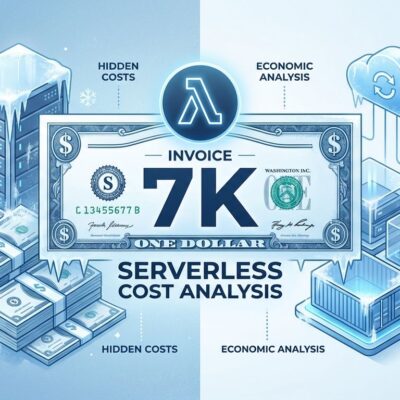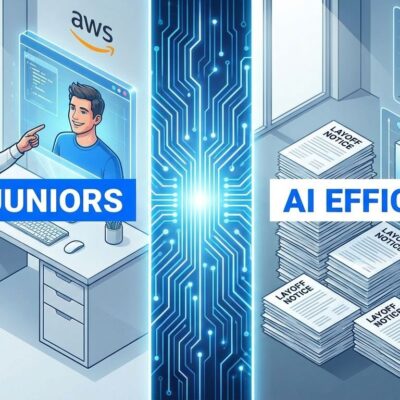
Global IT spending has tripled since 2005—from $1.7 trillion to $5.6 trillion in constant 2025 dollars—yet software project success rates haven’t budged in 20 years. IEEE Spectrum’s December 2025 investigation exposes the brutal paradox: more money, same failures. Moreover, Canada’s Phoenix payroll disaster cost $5.1 billion (18 times the original estimate), Australia canceled a business register project after blowing $530 million with costs projected to hit $2.8 billion, and MIT found 95% of enterprise AI pilots fail. The uncomfortable question: are we solving the wrong problem?
The Spending Paradox: More Money, Zero Improvement
Despite IT spending tripling from $1.7 trillion to $5.6 trillion since 2005, software project failures remain constant. Furthermore, IEEE Spectrum’s December 2025 report states: “The overwhelming majority of software-related failures involve avoidable, known failure-inducing factors documented in hundreds of after-action reports, academic studies, and technical and management books for decades.” Translation: we know what causes failures—organizations keep making the same mistakes anyway.
The Project Management Institute’s 2025 report shows 20% of enterprise projects still fail to meet business goals. Consequently, MIT’s July 2025 study found 95% of enterprise AI pilots fail despite $30-40 billion in investment. Additionally, the 2015 CHAOS report documented 61% general failure rates and 98% for large, complex projects. The pattern across decades: new technology, same organizational problems. Therefore, AI projects aren’t special—they’re repeating the exact patterns that have plagued traditional IT for 20 years.
This proves money isn’t the solution. Organizations are throwing budgets at symptoms while ignoring root causes: requirements ambiguity and communication breakdowns. However, when your organization invests millions in AI tools but can’t define clear success criteria or maintain stakeholder alignment, you’re not modernizing—you’re automating dysfunction at scale.
Catastrophic Failures Cost Billions
Two recent disasters exemplify the problem. Canada’s Phoenix payroll system started with a $274 million estimate in 2012. The actual cost as of June 2025: $5.1 billion—an 18-fold overrun. Moreover, the system affected 80% of 290,000 federal employees through underpayments, overpayments, and non-payments. As of March 2025, 349,000 errors remain unresolved while the government burns $12 million monthly on fixes. Consequently, the Office of the Auditor General called it an “incomprehensible failure of project management and oversight.” A parliamentary committee labeled it an “international embarrassment.”
Australia’s business register modernization offers a similar lesson. Original estimate: $480.5 million. Amount spent before cancellation: $530 million. Projected total cost: $2.8 billion—a 5.8-fold overrun. Furthermore, the project was delayed five years (wouldn’t complete until 2029) before an independent review concluded the “economic benefits do not justify the expenditure.” Root causes: underestimated complexity, scope expansion before delivery, and over-reliance on contractors. Five hundred employees burned $12 million monthly before the government pulled the plug.
These aren’t outliers or bad luck. Oxford research by Bent Flyvbjerg—analyzing 5,392 projects totaling $56.5 billion—shows IT projects follow power-law distributions with fat tails. Sixteen percent of IT projects exceed budgets by 200%. Decision makers underestimate risk by assuming normal curves where power laws apply. Consequently, Phoenix and Australian disasters are statistical inevitabilities when process is broken. The question isn’t “if” catastrophic overruns happen—it’s “which project” becomes the next billion-dollar disaster.
The Maintenance Trap Stalls Developer Careers
Organizations spend 70-75% of IT budgets on legacy system maintenance—$520 billion annually in the United States alone, $1.14 trillion globally. This leaves only 20-30% for innovation. For developers, this means career stagnation: trapped fixing old code, unable to learn new skills, burned out by technical debt—the number one developer frustration in Stack Overflow’s 2024 survey.
The real cost isn’t the $520 billion—it’s the innovation that never happens. When 70% of your budget services existing issues, there’s no capacity to respond to market opportunities. Furthermore, organizations ignoring technical debt spend 40% more on maintenance than peers who address it proactively. Additionally, technical debt can represent up to 40% of the technology estate in large enterprises, creating a self-reinforcing cycle: more debt, more maintenance, less innovation, more talented developers fleeing to companies that aren’t trapped in legacy hell.
For developers, it’s career death. Spend years maintaining COBOL payroll systems instead of learning Kubernetes or Rust. Therefore, organizations lose talent not over compensation but over technical debt. When developers see 70% of the budget locked into maintaining broken systems with no plan to modernize, they update their resumes. Consequently, the hidden cost of the maintenance trap: your best engineers leave, and you’re stuck with those willing to tolerate it.
Root Causes Are Organizational, Not Technical
IEEE Spectrum: “The overwhelming majority of failures involve avoidable, known failure-inducing factors.” The data is clear: 39% of project failures stem from poor requirements, 57% from communication breakdowns. Moreover, the Project Management Institute found that $75 million of every $135 million is at risk from poor communication. Projects led by high business acumen professionals have 27% lower failure rates (8% versus 11%). The problem isn’t tools or languages—it’s process, clarity, and organizational discipline.
Yet only 18% of project professionals demonstrate high business acumen, with 66% at moderate levels. This gap explains why spending tripled without improving outcomes. Additionally, MIT’s AI study reinforces the point: vendor partnerships succeed 67% of the time versus 33% for internal builds. Organizational capability matters more than technical sophistication. However, Phoenix didn’t fail because of PeopleSoft limitations. The Australian project didn’t fail because of tech stack choices. They failed because requirements were unclear, stakeholders weren’t aligned, and project management was inadequate.
Fix those first. Business acumen training, requirements discipline before coding, communication transparency as a KPI. These aren’t exciting solutions—no new framework to learn, no AI magic, no cloud migration to plan. Nevertheless, they work. Just the unglamorous work of defining clear requirements, maintaining stakeholder alignment, and managing scope creep. That’s why organizations skip them—process improvement is harder than buying tools.
Key Takeaways
- Spending tripled, success flat. IT spending grew from $1.7 trillion to $5.6 trillion since 2005 while project success rates remained stagnant for 20 years. Conclusion: money doesn’t solve organizational dysfunction.
- Phoenix ($5.1B) and Australian ($2.8B) are predictable, not outliers. Oxford research shows 16% of IT projects exceed budgets by 200%. These disasters follow power-law distributions—catastrophic overruns are statistical inevitabilities when process is broken.
- $520 billion trapped in maintenance starves innovation and developer careers. Organizations spend 70-75% of IT budgets on legacy systems, leaving only 20-30% for innovation. Developers flee technical debt—the number one frustration in Stack Overflow’s 2024 survey.
- Root causes: 39% requirements, 57% communication (not technical). The overwhelming majority of failures involve avoidable, known factors. Phoenix and Australian projects didn’t fail because of technology—they failed because of ambiguous requirements and communication breakdowns.
- Fix process first: business acumen, requirements discipline, communication transparency. Projects led by high business acumen professionals have 27% lower failure rates. Vendor partnerships succeed at 67% versus 33% for internal builds. Organizational capability matters more than technical tools.












